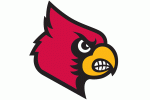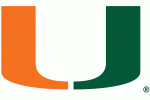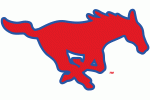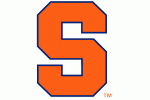In this article, we explore the latest technological innovations in college sports betting and college athletics coverage, focusing on the use of real-time data and analytics, the automation of data processes, and real-time betting integration, automating data processes for both media and wagering actions, as well as college sports betting and college athletics media coverage.

The legal sports betting industry in the United States is set to exceed an estimated $149.6 billion in total wagering value by the end of 2025, marking a significant increase of 23 per cent. By the first quarter of 2025, total wagers have already reached $43 billion. Such figures showcase a strong desire for sports, but, more importantly, reveal a significant shift in the technology available for engaging with sports, especially college-level sports.
This article examines the evolution of technology used in sports journalism compared to the coverage of college sports, particularly in the Atlantic Coast Conference (ACC). There is increasing resemblance between the work done by sportsbooks and that of sports journalists and digital media outlets, especially in the areas of mobile application development and real-time data analytics integration.
The crossover of sports media and entertainment platforms
The convergence of college athletics and sporting media coverage has integrated real-time sports betting. Universities that are a part of the college athletic conferences are now utilizing the data streams for betting markets to provide updates, analytics, and player tracking for previous games in real-time.
The idea of embedded data is not new, with non-core data for fans residing on team and social media pages, as well as in-game dashboards. ACC broadcasts are now equipped with features, such as calculated win-probability and drive-efficiency metrics that display in real-time. Simultaneously, betting companies are constantly updating, proposing, and offering new wagering options based on the information collected.
This covers mobile applications, especially in developing countries. For instance, in Mozambique, there is a trend where users are adopting miniature mobile applications that facilitate betting. For instance, users can conveniently download the betway mz apk on their Android phones, which enables instant betting, access to live betting tools, match information, as well as account management, all without demanding hefty downloads or ever-present background data uses. The same focus on instant information is visible in the way media houses push live logic stats to users during games.
How real-time data is transforming fan engagement
An increasing number of college sports fans are following live matches interactively as opposed to using screens. Cutting-edge game tracking systems monitor and report the score alongside actions such as possession, quality of shots, and player impact on the game in real-time. Fans are no longer bound to recaps or highlight reel packages, as they can now track each possession, every tick of the shot clock, each dribble, and every timeout decision on their phones or desktops via apps and widgets.
The same real-time data pipelines used by betting operators to update odds during a game are also employed for these features. This means that whether a fan is reading a game analysis or monitoring a live bet, they are often receiving updates from the same place, just filtered differently. For game analysis and live betting, the data updates used are the same, and this enhances the overall experience for the fan. This helps the user grasp the intricacies of every game.
For ACC basketball, this has expanded the scope of fan interaction and engagement in regular-season games, and not just during the tournaments. The broadcasts during these games also feature contextual and real-time comparison stats like three-point shooting percentages and team rhythm, which are crucial for grasping the team dynamics, and draw from the same data sources used to update betting sportsbooks. The simultaneous advancement improves both casual and complex viewing.
Innovations driving the future of online sports
The growth of in-play bet options is the betting industry's most notable technology advancement. Unlike traditional forms of betting that focused on pre-game events, in-play betting enables fans to wager on events as they happen. This gives room for a substantial backend to handle bets on player action, injuries, and the overall gameplay minute by minute.
Such innovations are shaping the way games are reported and analyzed. They now use predictive analytics for live commentary and betting, which considers historical data, player interactions, and even the positional outcomes. For example, during an underdog team's surge, a broadcaster may reference a bet-adjusted win probability that updates in real-time.
Some emerging platforms experiment with community-sourced or collaborative pricing, where a central operator no longer sets the odds, but they are governed by real-time interparticipant algorithms. While these methods are in the works, they suggest a reality in the future where the distinction between sports betting and fantasy mechanics will increasingly diminish.
The role of analytics in both coverage and wagering
Post-game box scores are no longer the sole focus. Many sports have advanced coverage provided in real-time, which employs complex algorithms, some of which are now perceivable by the audience via visuals and dashboards. During the contest, fans are provided with metrics like adjusted offensive efficiency, effective field goal percentage, and a defensive rebounding rate.
The same information as above applies to betting as well, especially when it comes to making adjustments to point spreads and totals over and under. During the game, predictive models can estimate future expected scoring and other relative team plays based on team habits and recent team performance momentum. Such information is helpful not only to the bettors, but to the audience who is more interested in understanding the flow of the game.
An important emerging application of analytics is real-time integrity checking, where betting activities are monitored alongside player and referee activities. That same supervision adds another layer of assurance to the accuracy of the broadcast. Such game flow anomalies may point to data gaps, inconsistencies in officiating, and other cryptic issues worth analysis.
For fans who follow college sports, it may be helpful to know how these visualization technologies function. They are based on and interconnected to the same systems that drive sports betting.
Although this does not mean that coverage encourages betting, it does illuminate the digital flow of convergence where information is consumed and betting happens. Be it mobile-friendly apps or outlets that publish win-probability models during ACC games, the coverage is the same.
The deeper, more detailed, and richer data experience for fans is more likely to be appreciated by fans and advanced sports analysts. As technologies continue to evolve in the college sports arena, sponsors, companies, and analysts are continuously utilizing advanced media and sprawling betting technology. Expect the technology to reshape the entire approach for fans, analysts, and coaches towards the game.



















